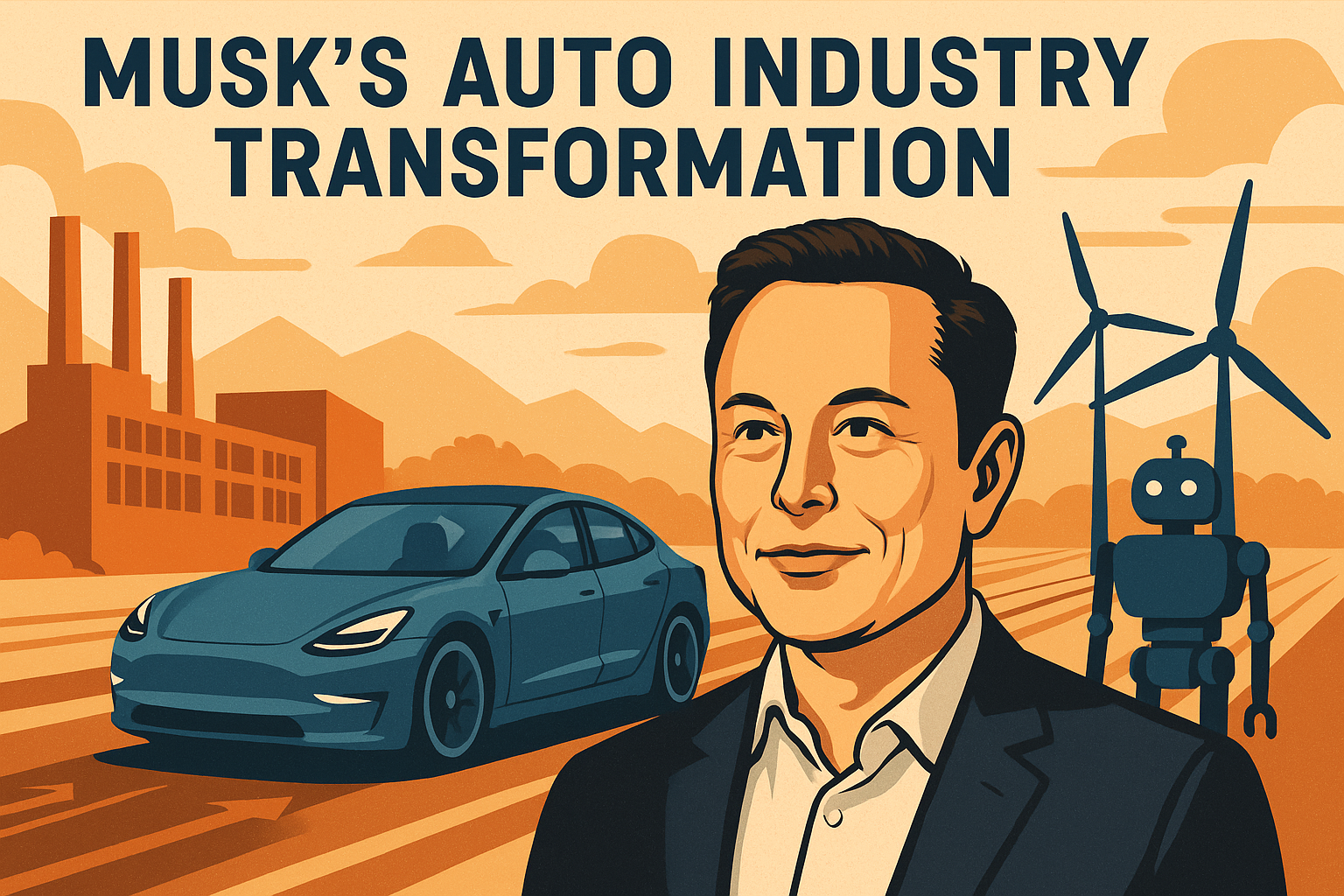
Tesla’s journey from a niche electric vehicle (EV) startup to the world’s most valuable automaker is a story of audacious vision, relentless innovation, and industry disruption. The company’s impact on global transportation, energy storage, and the broader clean technology movement has made it one of the most closely watched—and debated—companies on Wall Street.
The Early Days: Seeds of Disruption
Tesla’s roots stretch back to 2003, when engineers Martin Eberhard and Marc Tarpenning founded the company with a mission to prove that electric vehicles could be better, quicker, and more fun to drive than gasoline cars. Elon Musk joined as lead investor and chairman after Tesla’s first major funding round in early 2004, bringing both capital and the ability to command public attention.
The team’s first car, the Tesla Roadster, debuted in 2008. Unlike previous electric cars, which were often slow and unexciting, the Roadster used a Lotus Elise chassis and advanced lithium-ion battery technology to deliver sports car performance. The car’s 245-mile range shattered stereotypes about EVs and demonstrated that electric propulsion could compete with—and even surpass—internal combustion engines.
Model S and the Scaling Challenge
The critical turning point for Tesla came in 2012 with the launch of the Model S, a luxury sedan that redefined expectations for electric vehicles. Featuring rapid acceleration, a minimalist touchscreen interior, and over-the-air software updates, the Model S won numerous industry accolades and forced established automakers to take EVs seriously.
Scaling production, however, proved a daunting challenge. The company faced near-constant financial pressure, running lean on cash and at times teetering on the edge of bankruptcy. Yet Musk and his team pressed forward, betting the company’s future on the development of the Model 3, a more affordable EV targeting the mass market.
Surviving the ‘Production Hell’
The Model 3, unveiled in 2016, generated unprecedented demand with hundreds of thousands of pre-orders. But manufacturing at scale proved more complex than anticipated. Tesla’s so-called “production hell” in 2017–2018 included costly delays, missed deadlines, and logistical snafus. Nevertheless, the company ultimately ramped up production, achieving profitability and delivering on its promises to customers and investors.
By 2020, Tesla had not only stabilized but begun to dominate. The Model Y crossover further broadened the company’s appeal, and a series of profitable quarters led to Tesla’s inclusion in the S&P 500 index—an event that forced institutional investors worldwide to add the stock to their portfolios.
Global Expansion and the Gigafactory Network
Tesla’s growth story accelerated as it expanded globally, building Gigafactories in Shanghai, Berlin, and Austin. These massive facilities enabled the company to scale production of vehicles, batteries, and energy products to new heights. Vertical integration became a hallmark of Tesla’s strategy, as it sought control over everything from software to battery manufacturing.
Tesla’s investment in battery technology has been pivotal. The company’s innovations, including the development of its 4680 cell and the pursuit of cost-effective, high-energy-density batteries, have driven down costs and supported its ambitions for both automotive and grid-scale energy storage.
The Broader Ecosystem: Software, Autonomy, and Energy
Beyond cars, Tesla has positioned itself as a technology and energy company. The Autopilot and Full Self-Driving (FSD) suites—though controversial and often a lightning rod for regulatory scrutiny—have generated billions in revenue and positioned Tesla at the forefront of the autonomous vehicle race.
The company’s energy segment, including solar panels and the Powerwall/Powerpack battery systems, complements its core mission to accelerate the world’s transition to sustainable energy. Tesla’s Supercharger network, meanwhile, provides a critical competitive advantage, alleviating “range anxiety” for EV owners and setting a global standard for charging infrastructure.
Financial Triumphs and Volatility
Tesla’s ascent to a trillion-dollar market capitalization in 2021 (NASDAQ: TSLA) marked one of the most dramatic runs in market history. Early investors were handsomely rewarded as the company’s stock price soared, though volatility remains a constant feature, driven by execution risks, macroeconomic shifts, and the outsized personality of its CEO.
Tesla’s strategy of direct sales, avoidance of traditional dealerships, and focus on high-margin software updates have given it enviable gross margins for the auto industry. The company has also accumulated billions in regulatory credit sales, although that revenue stream is expected to wane as competitors ramp up their own EV offerings.
Challenges and the Road Ahead
Tesla faces mounting competition as legacy automakers and new entrants flood the EV market. Regulatory and legal risks persist, especially regarding claims about Autopilot and FSD capabilities. The company must also navigate geopolitical tensions as it expands in China, Europe, and other critical markets.
Yet Tesla’s brand, relentless focus on innovation, and first-mover advantage in electric drivetrains, software, and charging infrastructure continue to set it apart. Its ambitious plans for a next-generation vehicle platform, robotaxi service, and humanoid robotics division have the potential to redefine not just transportation, but automation more broadly.
Conclusion
From its humble beginnings as a risky startup to its current status as a symbol of technological disruption, Tesla has fundamentally altered the trajectory of the global auto industry. Elon Musk’s vision and Tesla’s execution have forced the world’s largest automakers to rethink their strategies, accelerating the global transition to electric mobility and clean energy. While challenges remain, Tesla’s legacy as a revolutionary force in both finance and industry appears secure.
Disclaimer: This article is for informational purposes only and does not constitute investment advice. Investing in stocks involves risks, including loss of principal. Readers should conduct their own research or consult a financial advisor before making investment decisions.





